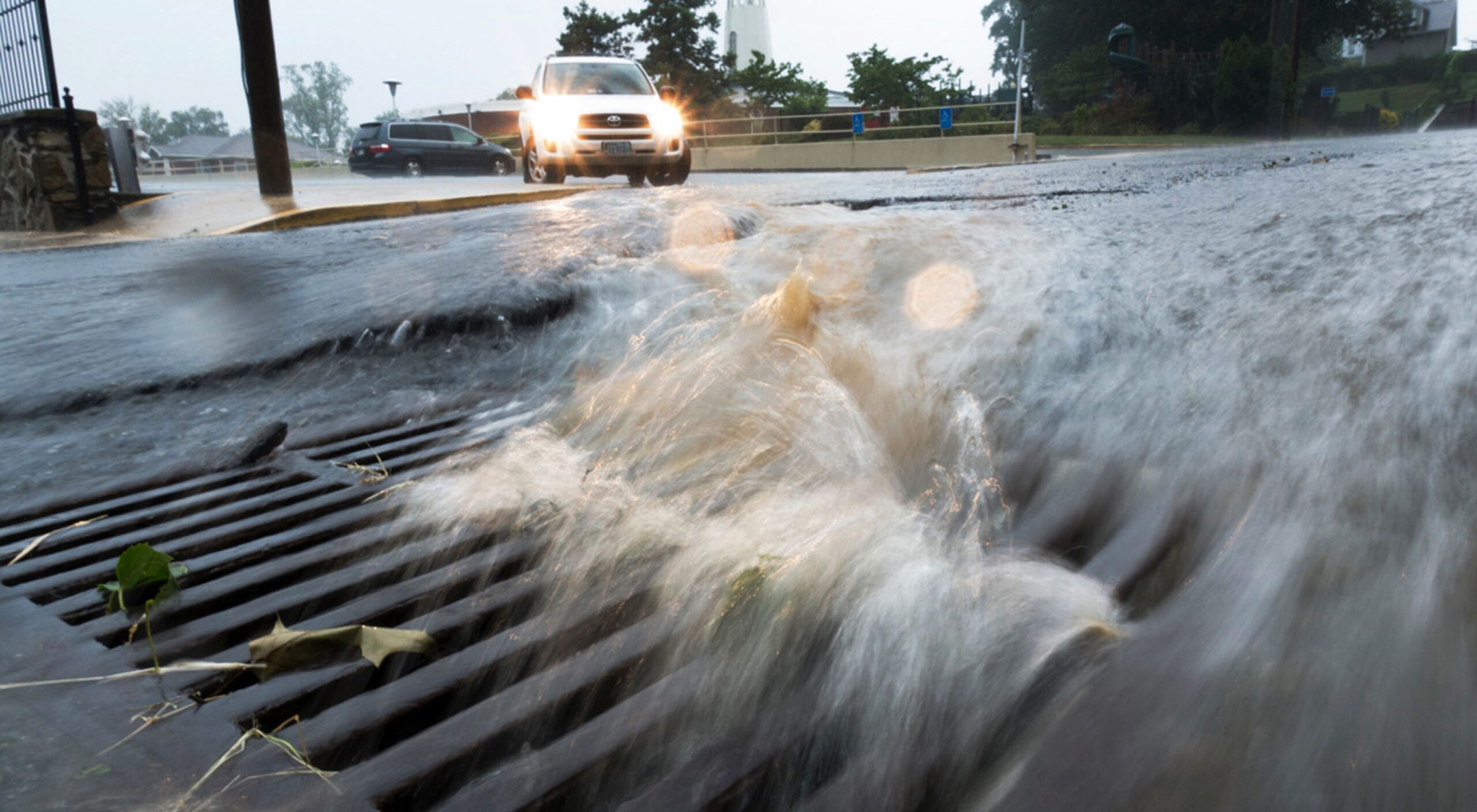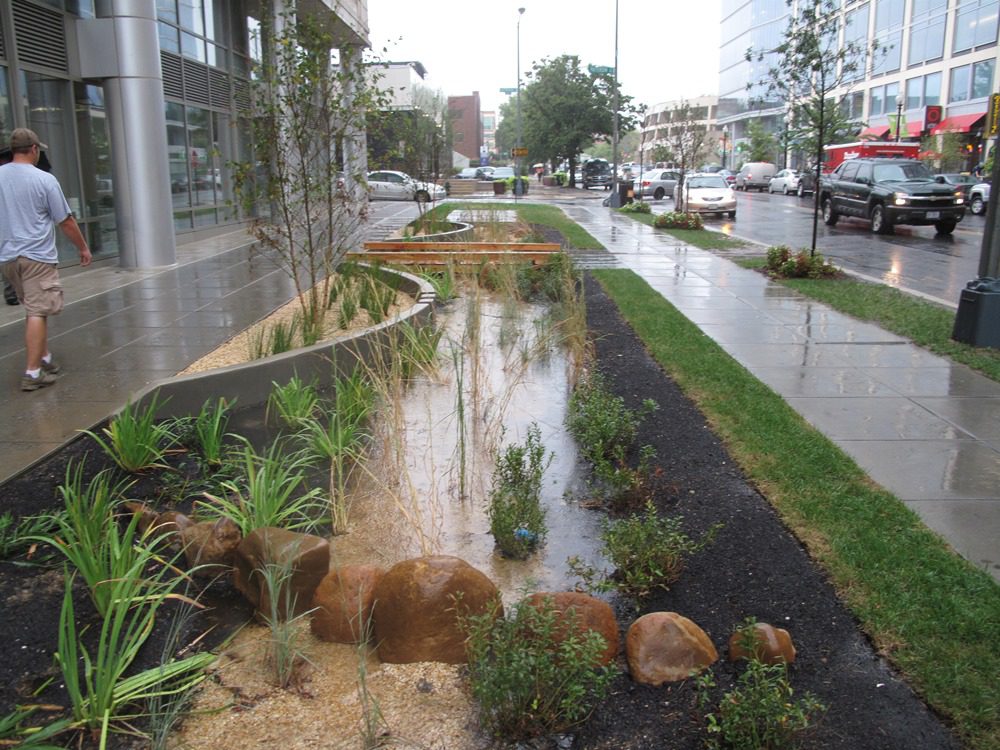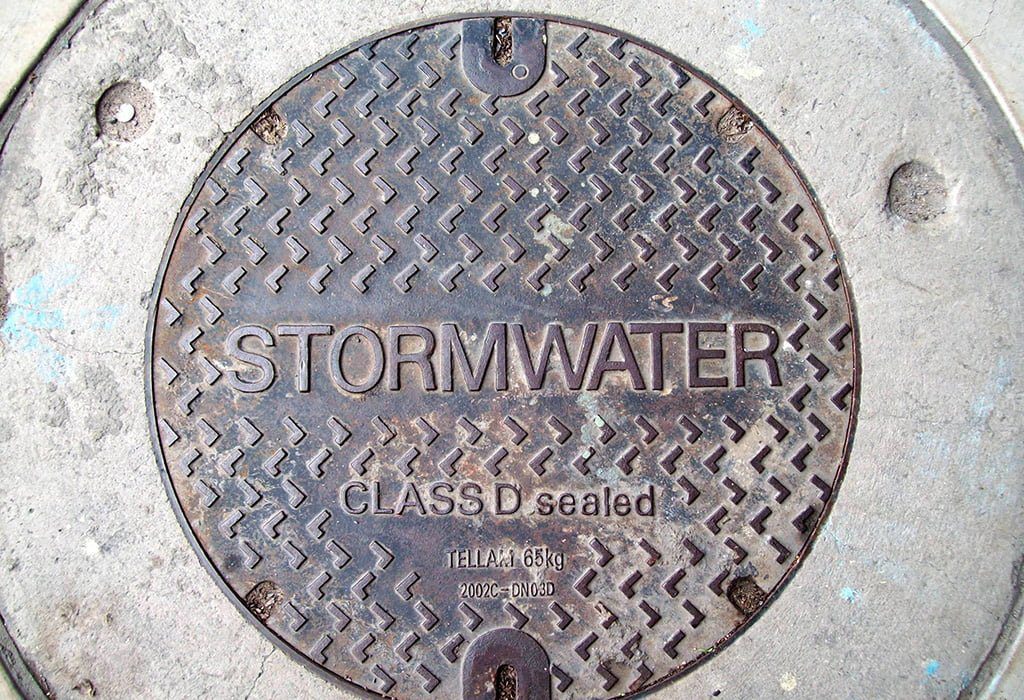Flood Doctor | Water Damage Restoration Services
Part 1: Introduction
Within this handbook, you will find valuable insights on how to minimize the risk of basement flooding, both for yourself and your neighbors. The resource outlines a total of 20 effective flood reduction options, such as:
Option 1: Talk to your municipal government about basement flooding
Option 2: Inform your municipal government about basement flooding that you’ve experienced
Option 3: Hire a licensed plumber to conduct a detailed plumbing investigation on your home
Option 4: Check your insurance policy, or talk to your insurance broker or insurance provider about basement flood coverage
Option 5: Avoid pouring fats, oils, and grease down household drains
Option 6: Keep storm sewer grates clear
Option 7: Seal cracks in foundation walls and basement floor
Option 8: Considerations for overland flood entry-points
Option 9: Reduce home water use during heavy rainfall events
Option 10: Maintain eavestroughs and downspouts
Option 11: Avoid storing items directly on the basement floor
Option 12: Downspout disconnection, extension, and splash pads
Option 13: Lot grading, backfilling, and swales
Option 14: Weeping tiles, sump-pits, and sump-pumps
Option 15: Mainline, normally open backwater valve
Option 16: Maintain sewer laterals
Option 17: Severance of storm sewer lateral
Option 18: Considerations for reverse sloped driveways
Option 19: Window wells and window well covers
Option 20: Avoid remodeling or finishing basements
This handbook also provides some background information and descriptions of municipal sewer and stormwater management issues that have led to basement flooding issues in the Washington, D.C., metro area. It is our hope that this handbook will provide useful guidance to any homeowner who would like to reduce their chances of having basement flooding.
Part 2: Contents
- Introduction
- Contents
- Background
- The importance of safeguarding your home against basement flooding
- If your home has a basement, you can have basement flooding
- What is basement flooding, and why does it happen?
- Overland flooding
- Infiltration flooding
- Sewer backup
- Which type of flooding should you be concerned about?
- What can I do to help stop basement flooding in my home and community?
- Simple and inexpensive things you can do to protect yourself from basement flooding
- Visit your municipal government’s website or contact the public works, utilities, or building department to find out about basement flooding in your community
- Talk to your government about basement flooding that you’ve experienced
- Hire a licensed plumber to conduct a detailed plumbing investigation on your home
- Check your insurance policy, or talk to your insurance provider or broker
- Avoid pouring fats, oils, and grease down your drains
- Keep storm sewer grates clear
- Seal cracks in foundation walls and basement floor
- Considerations for overland flood entry-points
- Reduce home water use during heavy rainfall events
- Maintain eavestroughs and downspouts
- Avoid storing items directly on the basement floor
- Downspout disconnection, extensions, and splash pads
9. Measures that are highly effective but may require more effort
-
- Lot grading, backfilling, and swales
- Weeping tiles, sump-pits, and sump-pumps
- Mainline, normally open backwater valve
- Maintain your sewer laterals
- If you have a storm sewer connection, consider severing it as close to the municipal sewer system as possible
- Considerations for reverse sloped driveways
- Window wells and window well covers
- Avoid finishing basements and storing expensive, valuable, or irreplaceable items in your basement
- How much water flows from a roof?
10. Glossary
Part 3: Background
Although they may not be at the forefront of homeowners’ minds, sewer systems and stormwater management play a vital role in modern cities. Without them, our current way of life would be significantly impacted. These essential systems serve to keep our communities and homes dry and to prevent serious public health problems.
Across the DC metro area, sewer systems have proven highly effective in conveying sewage and stormwater away from residential areas and city streets, successfully mitigating the risk of health impacts and flooding. However, there have been instances where these systems have failed to perform as intended.
Over the past few years, numerous instances of urban flooding have caused basement flooding in both large and small communities throughout the Washington DC metro area. These events have impacted cities such as Washington, D.C., Alexandria, Arlington, Bethesda, Rockville, Fairfax County, and many others.
Urban flooding has also affected smaller communities, including Gaithersburg, Manassas, and Falls Church, among others. Unfortunately, virtually no community in the Washington, D.C. metro area is immune to the threat of urban flooding.
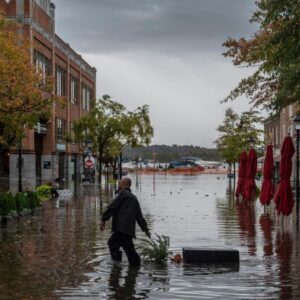
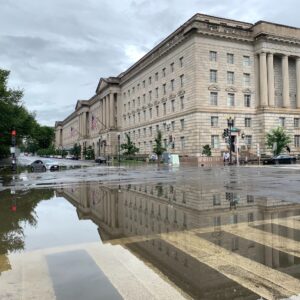

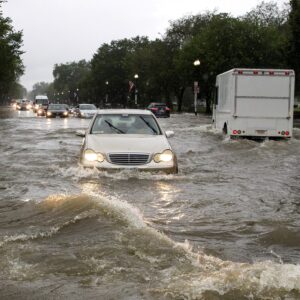
There will always be a chance that basement flooding will occur, no matter what the government or private homeowners do to reduce the risk.
Severe weather events and other factors that lead to basement flooding are extremely difficult to predict. It is impossible to account for every potential scenario in the design of city stormwater management and sewer infrastructure, and basement flooding isn’t always the fault of municipal governments.
While adopting flood reduction measures outlined in this handbook will reduce the chances that a homeowner will experience basement flooding, there will always be a risk that basements will be flooded.
Part 4: The Importance of Safeguarding Your Home Against Basement Flooding
The consequences of basement flooding can be severe, resulting in extensive harm to your personal belongings and disrupting the habitability of your residence. Below are some of the effects that can occur due to basement flooding:
• Water damaged flooring and wall materials in the basement.
• Loss of furniture and other personal property.
• Damage to priceless sentimental objects.
• Spoiled food.
• Damaged functionality of the home’s electrical system, water heaters, and furnaces.
• Structural deterioration, which could lead to foundation damage.
• Harm to property kept in the basement.
In addition to minimizing harm to your dwelling and possessions, preventing basement flooding can also safeguard your well-being and that of your loved ones from the health hazards associated with flooding, such as respiratory ailments caused by moisture and mold proliferation.
Furthermore, in the event of basement flooding, the probability of your neighbors encountering similar problems increases. If a substantial volume of water enters your basement, it may enter your floor drain and overwhelm the public sewer system, potentially leading to sewer backup issues in your vicinity.

Frequently, the destruction caused by basement flooding is not covered by insurance. As outlined in this guidebook, the majority of homeowners’ insurance policies exclude damages resulting from overland and infiltration flooding. While many insurance providers offer coverage for sewer backup losses, flood coverage is often included as an add-on to standard home insurance policies, necessitating a separate endorsement purchase.
To determine if you are insured for sewer backup losses, consult with your insurance agent or provider.
Part 5: If your home has a basement, you can have basement flooding
Living on a hill or having no prior incidents of basement flooding may not necessarily guarantee safety from such occurrences. Flooding events in several communities in the Washington D.C. metro area have affected many people who were thought to have lived in areas where basement flooding could not occur.
Moreover, much of the sewer infrastructure in the Washington DC metro area is getting older. Many communities have had problems with cracked underground sewer pipes, which allow a constant flow of groundwater into the system. This situation can reduce the ability of the system to handle heavy rainfall, leading to flooding events.
Furthermore, climate change will increase the frequency and intensity of heavy rainfall events in the Washington D.C. metro area. This means that the heavy rainfalls of the past will occur more often in the future, causing more flood events.
Homeowners in Northern Virginia, Maryland, and D.C., can have problems with basement flooding even when there has been no major rainfall event. The condition of your own sanitary sewer lateral, the underground pipe that connects your home to the municipal sanitary sewer system, can result in sewer backup. This is especially true when there are problems with the build-up of debris in your lateral or in the municipal sanitary sewer system.
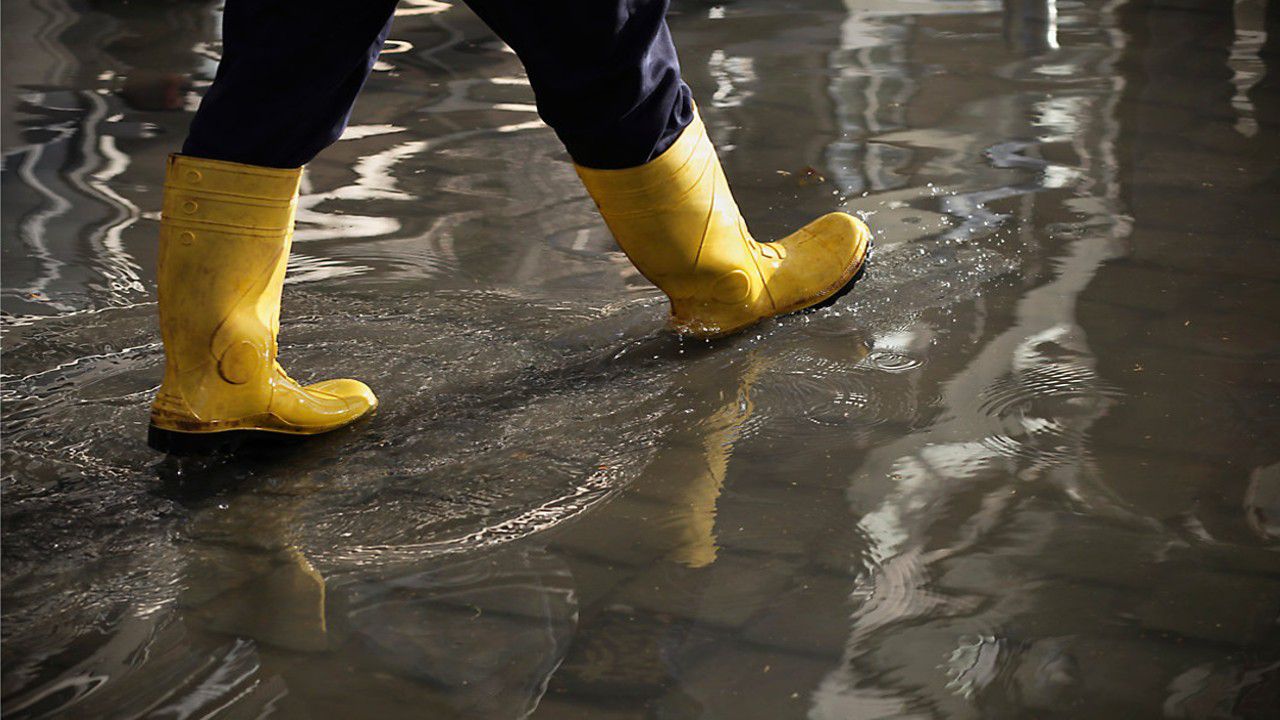
All things considered, it is a good idea for any homeowner in the Washington DC metro area to protect their home from basement flooding. It is better to be safe than sorry.
Actions taken by homeowners who have never experienced basement flooding can reduce the risk for those who have.
Many basement flood reduction actions, including disconnecting weeping tiles and downspouts from the municipal sewer system, require the cooperation of many homeowners in a neighborhood.
In many cases, more than half the homes in a particular neighborhood must disconnect their downspouts from the municipal sewer system to reduce basement flood risk from sewer backup.
Part 6: What is basement flooding, and why does it happen?
Keeping water out of your home and minimizing flooding in your community requires careful planning and preparation. One way to do this is by ensuring that your eavestroughs and downspouts are functioning properly to direct roof water away from your home. Proper lot grading also helps keep water away from your foundation and basement walls, directing it to municipal stormwater infrastructure.
However, if these systems fail to work correctly, runoff from your roof can end up in your basement or your neighbors’ basements. Severe rainstorm events can also overwhelm municipal infrastructure and lead to flooding. Therefore, it’s essential to take precautions to protect your home from potential flooding.
Basement flooding can occur due to overland flooding, infiltration flooding, or sewer backup, or a combination of two or all three types of flooding. Overland flooding happens when water from outside enters your home, and infiltration flooding occurs when water seeps through your home’s foundation. Sewer backup results when water flows back into your home through your sanitary sewer lateral or the city sewer system.
To prevent basement flooding, ensure that your eavestroughs and downspouts are functioning correctly and your lot is correctly graded. You can also install a backwater valve to prevent sewage from flowing back into your home. If you live in an area with a high risk of flooding, consider elevating your appliances, furniture, and personal belongings off the basement floor to minimize damage.
How much water spills from your roof?
Several communities have experienced severe rainfall events with more than 4 inches of rainfall, and some have had more than 10 inches during a severe rainfall event.
Many communities across Northern Virginia and Washington, D.C., experience several half-inch and a few 1-inch rainfall events each year.
A 1-inch rainfall event will shed 222 gallons of water from a two-story, 1800 sq ft. home with a 900 sq ft. roof, while a 10-inch event will shed 2,222 gallons from the same roof.
Overland flooding:
Communities in Washington, D.C., are designed to safely handle a certain amount of snowmelt and rainfall. When new communities are designed, city engineers and planners build underground sewer pipes and create overland flow routes to help convey stormwater and snowmelt away from urban areas. In many cases, streets, ditches, swales, and even parks have been designed to carry water away from residential areas. All of these stormwater management structures and strategies can help reduce basement flooding.
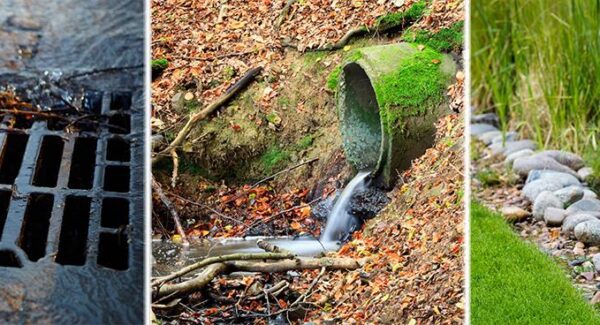
Officials in Washington, D.C., must build underground stormwater pipes to handle only a limited amount of rainfall and snowmelt because they are extremely expensive to build and install. In most cases, these pipes are designed to handle rainstorms that occur once every five years on average, or in other words, rainstorms that have a 20% chance of occurring in any given year.
However, older parts of the city often have underground pipes that can only handle storms that occur once every two years on average, or in other words, rainstorms that have a 50% chance of occurring in any given year.
In newer subdivisions, including those built during and after the 1970s, overland flow routes were built to handle rainfall events that exceed the capacity of underground pipes. Overland flow routes may include streets with heightened curbs or ditches that run next to roadways. Generally, overland flow routes are designed to handle a rainstorm that has a 1% chance of occurring in any given year or a rainstorm that might occur once every one hundred years. However, overland stormwater management infrastructure must be designed to handle a limited capacity to help offset their considerable cost.
If a rainfall or snowmelt event in Washington, D.C., exceeds the capacity of underground pipes or overland flow routes, overland flooding can occur. During the flood event, water will flow in areas that it usually would not, including through residential areas and over private properties. In older neighborhoods, a lack of overland flow routes significantly increases the chances that overland flooding will occur. This flood water can then enter basements through windows, doors, vents, and other openings. Overland flood water can also enter a home through reverse-sloped driveways.
Although overland flooding will generally consist of relatively clean rainwater, it may wash soil and mud into your basement, or it may be tainted with chemicals, pet waste, salt, or other contaminates from city streets and local buildings.
Managing stormwater
Communities that rely strictly on underground pipes and have combined sewers may be at a higher risk of basement flooding.
Many older neighborhoods do not have overland flow routes and rely entirely on underground pipes. In many cases, these pipes may be combined sewers that convey stormwater and sanitary sewage.
Talk to your municipal government to find out what types of stormwater management strategies are used in your community.
Infiltration flooding
During extended periods of rain, spring snow melt, or heavy rainfall events, the soil surrounding your home may become oversaturated with water. As a result, the water table may rise above the basement floor level, leading to infiltration flooding.
This type of flooding can occur when groundwater seeps through cracks in basement walls or floors. Older homes with weakened mortar or cracks in their foundations are particularly vulnerable to infiltration flooding.
Inadequate lot drainage or a poorly maintained weeping tile system can increase the risk of infiltration flooding.
Make sure you know your coverage: Infiltration and overland flooding.
The vast majority of insurance companies do not provide coverage for damages that are caused by overland and infiltration flooding.
Not everyone’s insurance policy is the same: Talk to your insurance provider or broker to find out the limits of your coverage.
Sewer backup
Sanitary Sewage:
- Generated by toilets, sinks, drains, and other home water uses
- Contains high levels of contaminants and poses a risk to health and the environment
- Collected through sanitary sewer laterals that connect homes to underground pipes
- Requires treatment at sewage treatment facilities before being released back into the environment
Storm Sewage:
- Excess surface water resulting from rainfall or snowmelt in urban areas
- Collected through underground storm sewer pipes using swales and catch basins
- Contains pet waste, salt, and other contaminants from city streets and surfaces
- Typically cleaner than sanitary sewage, but still requires treatment before being released into the environment
Types of Sewer Systems:
- Neighborhoods can be serviced by underground sewer pipes that are combined, separated, or partially separated
- Combined sewer systems convey both sanitary and storm sewage to treatment facilities or local surface water bodies
- Combined sewer overflow (CSO) can occur during heavy rainfall, releasing untreated sewage into local waterways
- Separated sewer systems have individual pipes for sanitary and storm sewage, allowing for directed treatment and less-intensive treatment, respectively.
Sewer Backup:
- Can occur when sewers receive more water than they can handle, causing surcharge and pushing water back into homes
- Can cause sewage backup through basement floor drains, toilets, and sinks
- Can create high pressures around basement floors and the foundation, causing structural damage to the home
- Weeping tile and downspout connections can contribute to sewer backup in combined sewer systems
- Backwater valves and storm sewer laterals can contribute to sewer backup in separated sewer systems
Have you made an insurance claim for sewer backup damages in the past?
There have been cases where homeowners who’ve made a claim for sewer backup damage have had difficulty in receiving payouts for later sewer backup damages.
– In some cases, homeowners who have made repeated claims for sewer backup damage have experienced capping of their eligible sewer backup payouts or cancellation of sewer backup coverage altogether.
– If you have made a claim for sewer backup damage, talk to your insurance provider or broker to find out if it affected your sewer backup coverage.
Which type of flooding should you be concerned about?
In many cases, homeowners in the Washington, D.C. metro area can experience damages from all types of flooding, including overland flooding, infiltration flooding, and sewer backup – sometimes all at once. It is very difficult to tell which parts of which communities will be subject to each type of flooding, so it is best to protect yourself from all types of flooding.
Which type of flooding should you be concerned about?
Neighborhoods in the Washington, D.C. metro area that are serviced by combined sewers may be at a greater risk of experiencing a sewer backup, as these types of sewers can receive more stormwater than they can handle. However, areas serviced by separated sewer systems can also experience sewer backup.
Older separated sewers can experience high levels of infiltration and inflow, where excess water enters the sanitary system through cracks that have developed over time, as well as cross-connections, where storm sewers have accidentally or illegally been connected to the sanitary system. Stormwater can also inflow directly into the sanitary system from the surface through manhole lids, increasing the chances of sewer backup.
New or old neighborhood? Does it make a difference?
For example, high rates of basement flooding can result in significant amounts of water entering sanitary sewer systems through basement floor drains, which can place significant stress on sanitary sewers and cause a sewer backup. As well, nature can throw many events at us that cannot be reasonably planned for. In these cases, the last line of defense is actions taken by the homeowner to reduce basement flooding in their own home.
